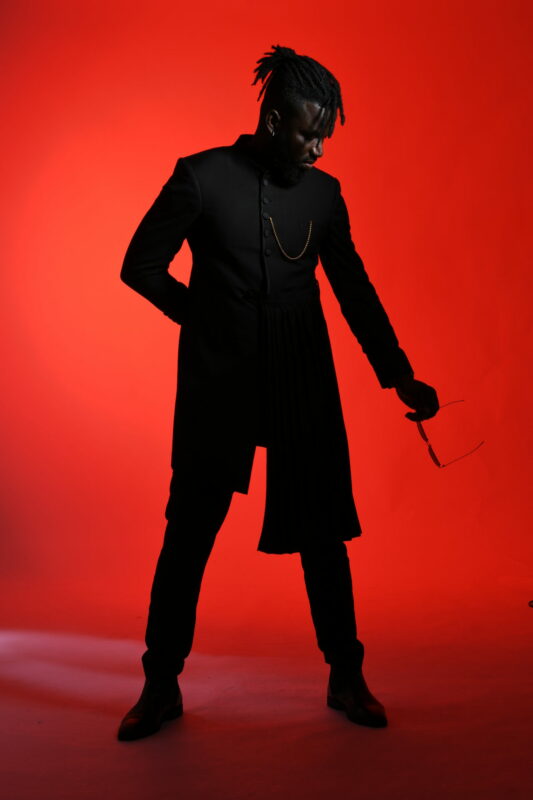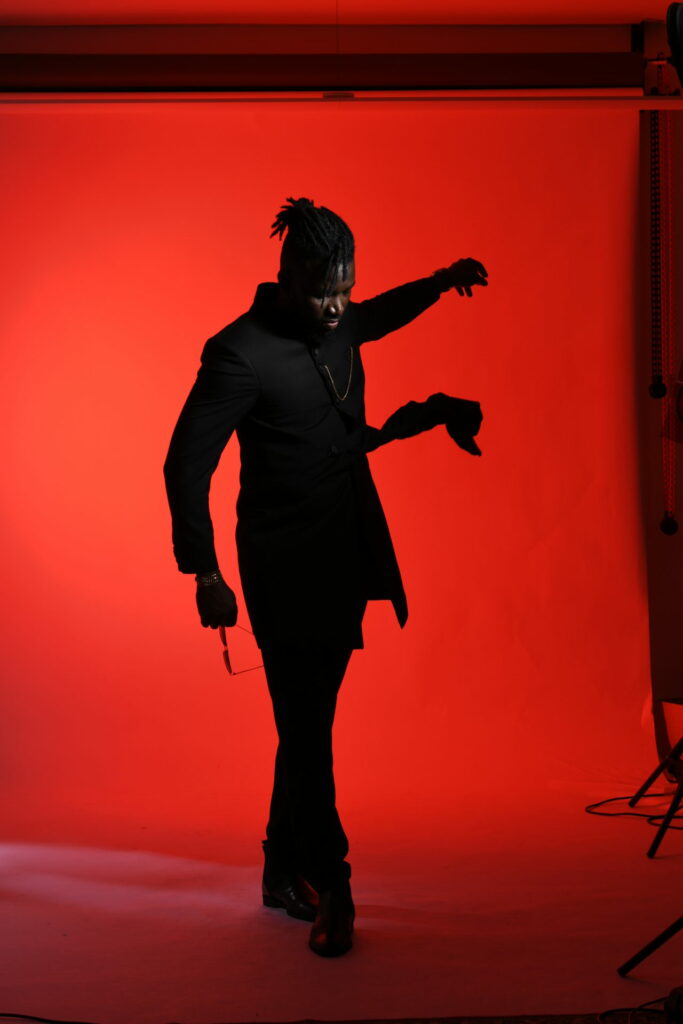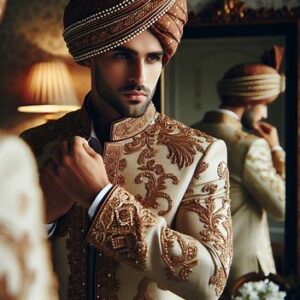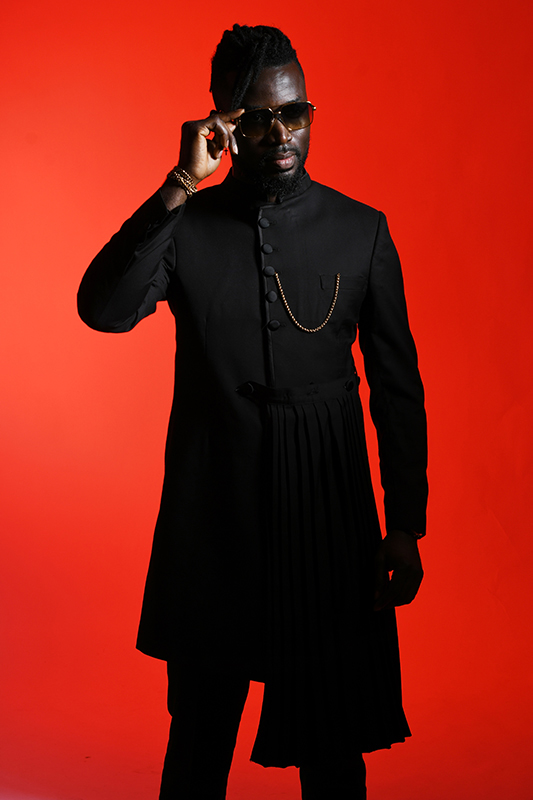The Sherwani: A Symbol of Elegance and Tradition
The Sherwani, a distinguished and elegant garment, traces
its origins back to the Mughal era in India. It evolved from the Persian cape known as the “balaba” or “chapkan” and was influenced by the traditional Indian “angrakha”1.
Initially, the Sherwani was worn by the aristocratic class, including nobility and royalty, symbolizing power and prestige2. Over time, it became a popular choice among the general populace, especially during the British colonial period, when it was adapted to include European elements such as buttons and band collars1.
Sherwanis come in various styles, each with its unique charm:
Traditional Sherwani: Made from heavy fabrics like silk, brocade, and velvet, adorned with intricate embroidery and embellishments such as zari and zardozi work3.
Achkan Sherwani: A shorter version, often worn with churidar trousers, featuring simpler designs suitable for less formal occasions1.
Jodhpuri Sherwani: Known for its structured fit and often paired with a matching waistcoat, this style combines traditional and contemporary elements5.
Angrakha Sherwani: Characterized by its overlapping front panels and often featuring elaborate embroidery1.
The Sherwani is more than just a piece of clothing; it is a symbol of dignity, respect, and cultural pride. It signifies the wearer’s social status and is often chosen for important life events. Wearing a Sherwani is a way to honor tradition and showcase one’s heritage4. It is also the national dress for men in Pakistan, highlighting its cultural importance4.
Occasions: The Sherwani is worn on various special occasions, including:
Weddings: It is the quintessential attire for grooms, symbolizing elegance and tradition.

Festivals: Worn during cultural and religious festivals, it adds a touch of grandeur to the celebrations.
Formal Events: Suitable for formal gatherings, official ceremonies, and state functions4.
Religious Ceremonies: Often worn during significant religious events and rituals2.
Contemporary Ways of Styling: Modern fashion has seen the Sherwani evolve with contemporary trends while retaining its traditional essence. Some contemporary styling tips include:
Fusion Fabrics: Combining traditional fabrics with modern materials like linen and cotton for a lighter, more comfortable feel3.
Minimalist Designs: Opting for simpler, cleaner designs with subtle embroidery for a modern look5.
Bold Colors: Experimenting with vibrant colors and unique patterns to make a fashion statement3.
Accessorizing: Pairing the Sherwani with modern accessories like designer shoes, pocket squares, and stylish turbans5.
Tailored Fits: Choosing a more fitted silhouette to blend traditional and contemporary styles5.
The Sherwani remains a timeless piece of South Asian fashion, embodying elegance, tradition, and cultural pride. Whether worn in its classic form or with a modern twist, it continues to be a powerful expression of identity and heritage.
Source:
The Birth of the Sherwani | INDIAN CULTURE
What Is A Sherwani? Unveiling The Elegant Traditional Indian Attire ...
Modern Versus Traditional: The Evolution Of Men's Sherwanis In Fashion
Sherwani - Wikipedia
The Sherwani: A Timeless and Elegant Piece of Indian Men’s Fashion
en.wikipedia.org






